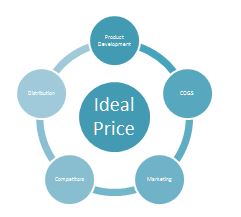That is such a great question. Why indeed? Surely building a brand for a private label product on Amazon is just a waste of time and money and really, who is going to remember to search Amazon for “Sassy Sara’s Kitchen Gadgets” when next they need a can opener?
Let’s say your customer bought your brand of garlic press and it came in the color they requested, on the day they expected it, it was the right price and the quality was great. You followed up with them, they may or may not have had an issue or a question for you, but overall, their experience with your your brand was a positive one. They use the garlic press all the time, and over time your company name or, even better, your logo, which you had put on the garlic press, has gradually, subliminally made its way into their subconscious.
Fast forward a few months and the same customer is searching for a can opener. Sure they didn’t search Sassy Sara’s can openers but they see pages of can openers, all about the same. But one brand jumps out, the one they recognize – your brand. However, your branded can opener is a little bit more expensive than the other brands.
So does the customer take the plunge with an “unknown” brand to save a buck or two or does he decide that the Sassy Sara’s garlic press has been such great quality, that they’d be safer paying a few extra bucks and going with yours?
Well, we all react differently to this kind of scenario. But you get the point.
Have you ever heard anyone say that it costs a lot more to sell to a new customer than it does to sell to an existing customer? If you have not studied marketing then that may be a new concept for you. It is however, the reason so many of us spend a great deal of money building a brand. Once you have confidence in a brand, chances are you will buy that brand again.
You had an iPhone, you liked it and so you bought another one down the track. It didn’t cost Apple anything really to get you to make the second purchase, but before you made the decision to purchase the first time, they had spent millions on you!
Selling on Amazon is a risky business at the best of times. You have to punt your product into the abyss that is the Amazon marketplace without any real knowledge as to whether your product will sell. And if it does sell, what are the chances that there will be profits to show at the end of the year? How will you fight off the inevitable hijackers, the copycats, the returns, the random changes to TOS, how will you own the buy-box 100% of the time?
Well, spending the extra money on creating a branded product, is definitely one way, and one important aspect of this business you really do need to be prepared for, especially as being brand registered has so many benefits.
The only alternative is that you buy something from China that the numbers tell you does sell and put it, unbranded, next to the others on the page. But what will make the customer click on yours when there’s a nice-looking one next to it with an appealing logo or a brand they recognize?
Sure there is price (a race to the bottom is a very bad idea – I explain more fully here) and there is also social proof – reviews and Facebook likes etc. Again, that goes a lot better for a branded product than a no-name product.
Brands are all about perception.
But what of building your brand off Amazon? All successful brands have an off-Amazon sales channel. That is next to impossible to do without a brand. And of course, you can’t get brand registered on Amazon without a brand, so there’s another reason right there.
But I think when you ask this question, you are asking a much broader question. You are asking if there is any sense in spending the huge amounts of time and money it takes to be successful and to build a long term, sustainable online business – via Amazon.
And that is a great question and one that each and every Amazon seller has to ask themselves at some point. Does all the hype about people making $10k per day sound like you? Have you got what it takes to make this really happen? Read this blog post if you need to explore this question further.
When you download your Google Analytics and you see that in the top 5 most searched for keywords searched to bring people to your site is your very own brand name (as is the case with my brands – I have several), then you know that you have done something right. So I do know a thing or two about building a brand (just FYI). Same applies to my products on Amazon btw so I don’t pay for PPC anymore. People just search for my product by brand and the search results – whether on Google or on Amazon – are all my brand products.
So yes, building a brand is absolutely beneficial, but it is costly and it takes time, knowledge and dedication to the task – plus a real understanding of the marketing process. So do lots of reading and learn as much as you can.
I hope some of the other articles on The Ten Percent Club can go some way to providing some of the education you need.
I don’t receive any money for providing this info – I just write it all up to help out.

